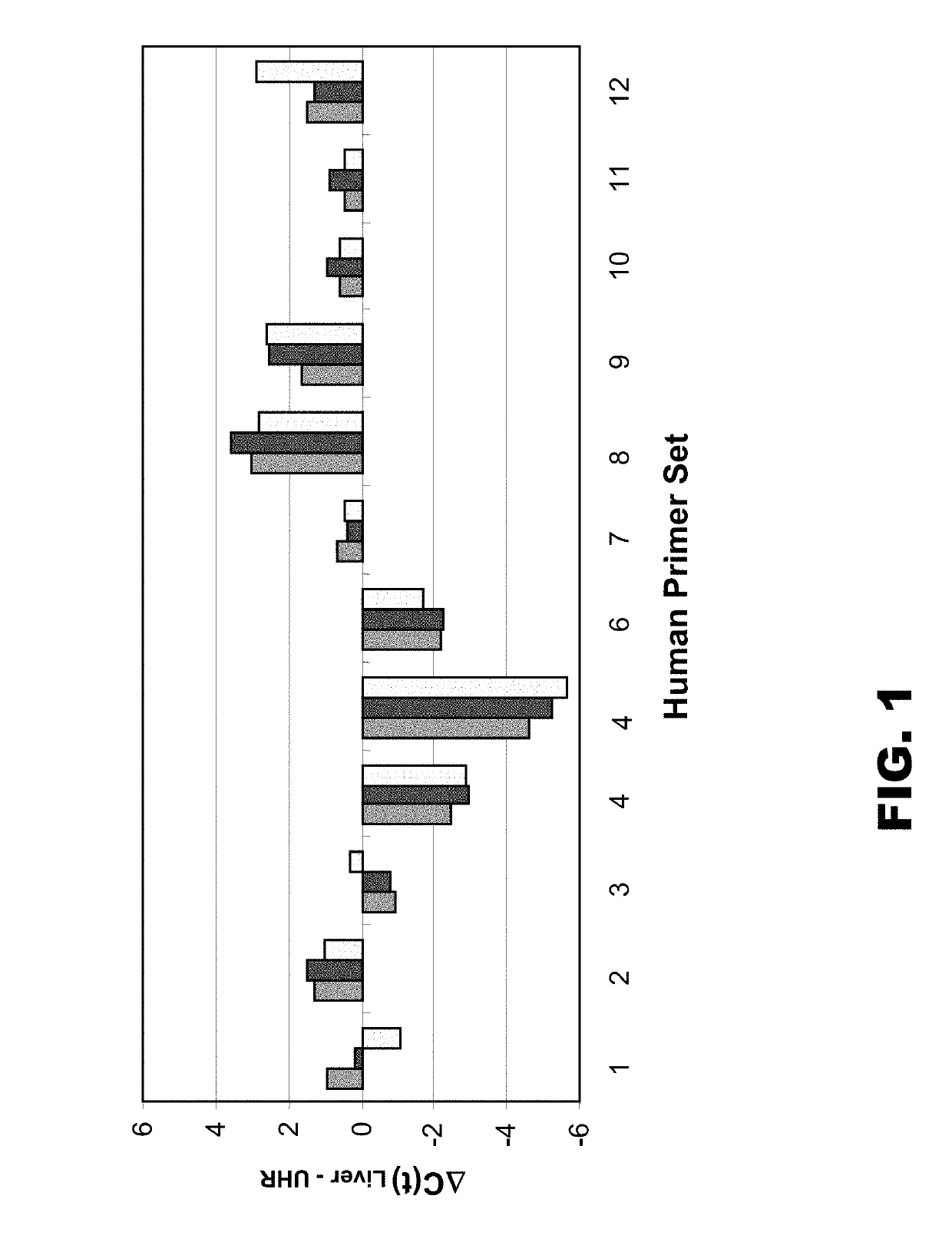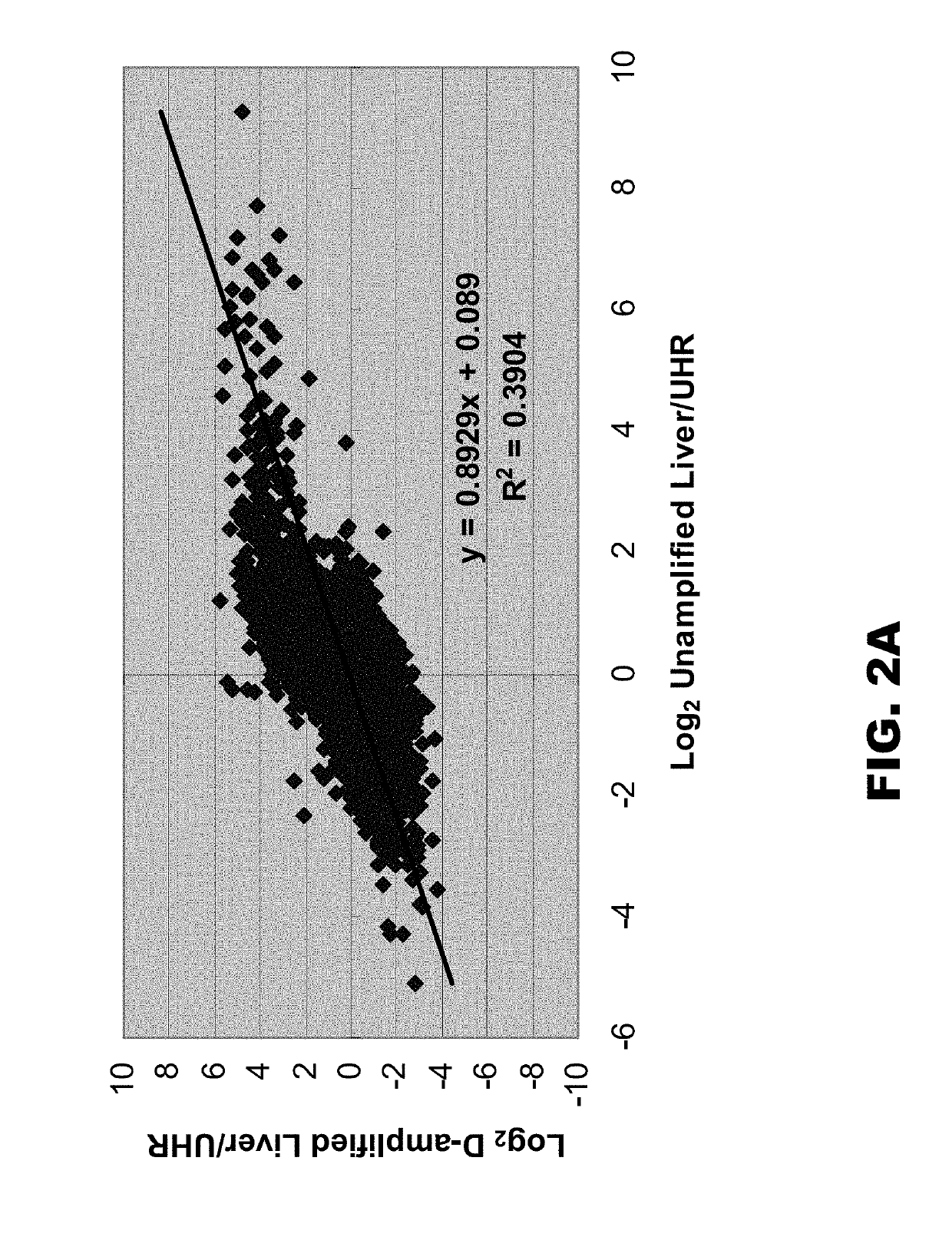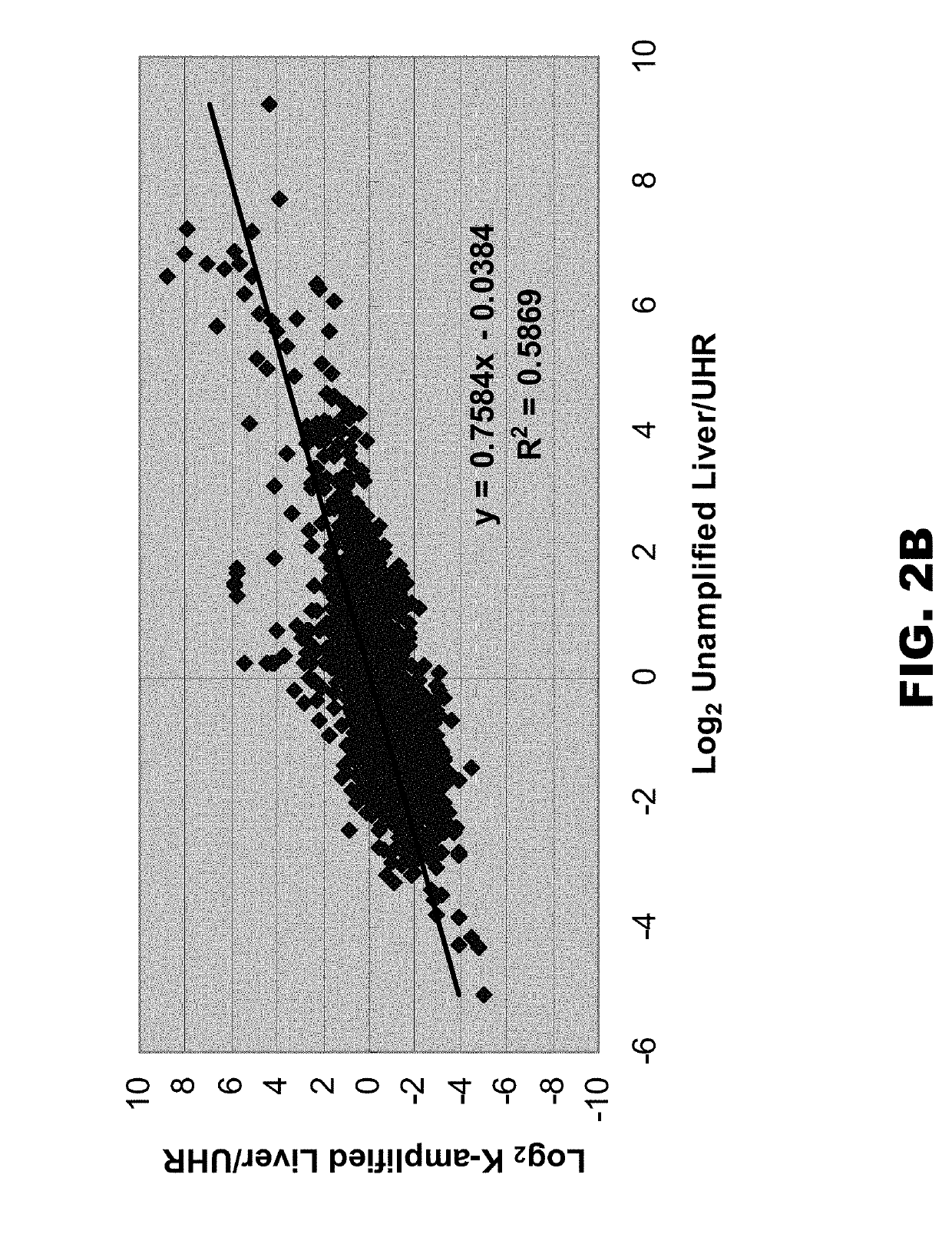Degenerate oligonucleotides and their uses
a technology of oligonucleotides and oligonucleotide, applied in the field of degenerate oligonucleotides, can solve the problems of reduced sequence complexity, limited analysis types that can be performed, and incomplete coverage of the starting population of nucleic acids
- Summary
- Abstract
- Description
- Claims
- Application Information
AI Technical Summary
Benefits of technology
Problems solved by technology
Method used
Image
Examples
example 1
of a D9 Library Synthesis Primer
[0068]In an attempt to increase the degeneracy of primers used in WGA and WTA applications, a library synthesis primer was synthesized whose semi-random region comprised nine D residues (D9). The primer also comprised a constant (universal) 5′ region. The ability of this primer to efficiently amplify a large number of amplicons was compared to that of a standard library synthesis primer whose semi-random region comprised nine K residues (K9) (e.g., that provided in the Rubicon TRANSPLEX™ Whole Transcriptome Amplification (WTA) Kit, Sigma-Aldrich, St. Louis, Mo.). Both K9 and D9 amplified cDNAs were compared to unamplified cDNA by qPCR and microarray analyses.
[0069](a) Unamplified Control cDNA Synthesis
[0070]Single-stranded cDNA was prepared from 30 micrograms of total human liver RNA (cat.#7960; Ambion, Austin, Tex.) and Universal Human Reference (UHR) total RNA (cat.#74000; Stratagene, La Jolla, Calif.) at a concentration of 1 microgram of total RNA ...
example 2
of 384 Highly Degenerate Primers
[0085]To further increase the degeneracy of library synthesis primers, the semi-random region was modified to include N residues, as well as either D or K residues. It was reasoned that addition of Ns would increased the sequence diversity, and interruption of the Ns with K or D residues would reduce intramolecular and intermolecular interactions among the primers. Table 2 lists 256 possible K interrupted N sequences (including the control K9 sequence, also called 1K9) and Table 3 lists 256 possible D interrupted N sequences (including the control D9 sequence, also called 1D9).
[0086]In an effort to minimize the number of primers to investigate, and provide a workable example, it was decided to limit the number of primers to evaluate to 384. The first cut was to eliminate any sequence containing 4 or more contiguous N residues, as it was assumed that four or more degenerate Ns could provide a substantial opportunity for primer dimer formation. This red...
example 3
l Screens to Identify the Exemplary Primers
[0098](a) Amplify Degraded RNA
[0099]A desirable aspect of the WTA process is the ability to amplify degraded RNAs. The top 9 interrupted N library synthesis primers from screen 4 (see Table 11) plus 1K9 and 1D9 primers were used to amplify NaOH-digested RNAs. Briefly, to 5 μg of liver total RNA in 20 μl of water was added 20 μl of 0.1 M NaOH. The mixture was incubated at 25° C. for 0 minutes to 12 minutes. At times 0, 1, 2, 3, 4, 6, 8 and 12 minutes, 2 μl aliquots were removed and quenched in 100 μl of 10 mM Tris-HCl, pH 7. WTAs were performed similar to those described above. That is, for library synthesis: 2 μl NaOH-digested RNA, 2 μl of 5 μM of a library synthesis primer, heat 70° C. for 5 min, add 4 μl of 2×MMLV buffer, 10 U / μl MMLV, and 1 mM dNTPs; incubate at 42° C. for 15 minutes; and dilute with 30 μl of H2O. For amplification: 8 μl of diluted library, 12 μl of amplification mix (2×SYBR® Green JUMPSTART™ Taq READYMIX™ and 5 μM unive...
PUM
| Property | Measurement | Unit |
|---|---|---|
| length | aaaaa | aaaaa |
| thermostable | aaaaa | aaaaa |
| molecular size | aaaaa | aaaaa |
Abstract
Description
Claims
Application Information
 Login to View More
Login to View More - R&D
- Intellectual Property
- Life Sciences
- Materials
- Tech Scout
- Unparalleled Data Quality
- Higher Quality Content
- 60% Fewer Hallucinations
Browse by: Latest US Patents, China's latest patents, Technical Efficacy Thesaurus, Application Domain, Technology Topic, Popular Technical Reports.
© 2025 PatSnap. All rights reserved.Legal|Privacy policy|Modern Slavery Act Transparency Statement|Sitemap|About US| Contact US: help@patsnap.com



